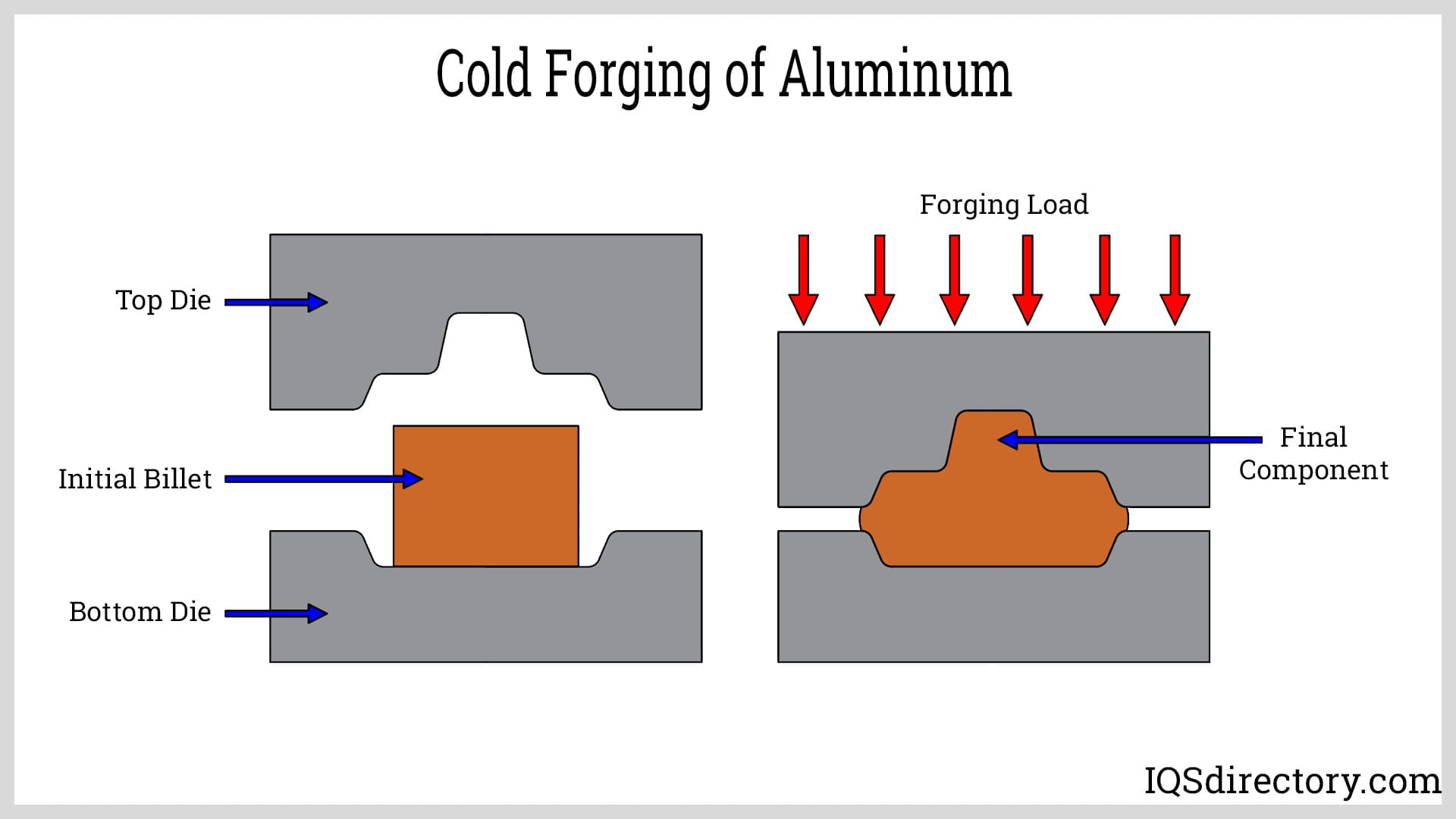Appreciating the role of Aluminum Foundry Wisconsin in casting efficiency
How Aluminum Foundry Adds To Innovations in Aerospace Engineering
Aluminum shops are integral to developments in aerospace engineering. They generate lightweight, high-strength elements that are crucial for modern-day airplane. Via advanced casting methods, these foundries create complicated geometries that improve architectural honesty. Furthermore, the advancement of premium Aluminum alloys supports the sector's concentrate on gas performance and sustainability. Difficulties stay in the production procedure. Comprehending these factors exposes the extensive impact of Aluminum on air travel's future.
The Importance of Lightweight Materials in Aerospace Style
As the aerospace market remains to develop, the value of lightweight materials becomes progressively obvious. The need for efficiency and sustainability drives designers to focus on using materials that minimize overall weight without jeopardizing structural stability. Lightweight materials, particularly Aluminum, play a crucial role in enhancing fuel performance, enhancing haul capability, and raising the general performance of airplane.
The integration of these materials enables for ingenious styles, making it possible for makers to produce more wind resistant forms that can endure extreme conditions. The decrease in weight not just decreases operational costs however also contributes to a lowered ecological footprint, aligning with international efforts towards sustainability in aviation.
Advanced Spreading Techniques in Aluminum Foundries
Advanced spreading techniques in Aluminum shops play an important role in aerospace engineering by enabling the production of light-weight and precise elements. Technologies in mold style and accuracy casting procedures are essential in attaining optimal efficiency and structural honesty. Furthermore, the growth of lightweight alloys enhances the total effectiveness and effectiveness of aerospace applications.
Cutting-edge Mold Layout
Cutting-edge mold and mildew layout plays a crucial function in the efficiency and performance of Aluminum shops, specifically within the aerospace field. By leveraging sophisticated materials and methods, modern molds can be crafted to hold up against high temperatures and stress, making sure peak efficiency throughout the spreading process. These designs usually integrate intricate geometries that enable the manufacturing of light-weight yet structurally audio components, crucial for aerospace applications. In addition, using computer-aided design (CAD) software program assists in precise modeling, allowing factories to refine and simulate mold and mildew styles prior to physical manufacturing begins. This not just improves the quality of cast parts however likewise lowers waste and lead times, causing significant cost financial savings. Overall, cutting-edge mold and mildew layout is a keystone of development in Aluminum Foundry modern technology for aerospace engineering.
Precision Casting Processes
The performance of ingenious mold designs flawlessly incorporates with precision spreading procedures, which are essential for producing top quality Aluminum elements in aerospace engineering. These procedures, including sand spreading, pass away casting, and financial investment spreading, ensure the production of complicated geometries with tight tolerances. Advanced methods like vacuum casting and pressure die casting enhance the integrity and surface area coating of the last items. Precision spreading minimizes material waste while optimizing the mechanical residential properties of Aluminum, crucial for aerospace applications. On top of that, employing real-time surveillance and progressed simulation devices throughout the spreading procedure enables for instant adjustments, resulting in boosted quality control. Collectively, these precision spreading procedures setting Aluminum foundries at the center of aerospace technology, sustaining the sector's need for dependability and efficiency.
Lightweight Alloy Development
As aerospace engineers seek to boost gas effectiveness and efficiency, light-weight alloy advancement comes to be a crucial emphasis in Aluminum foundries. These shops employ advanced spreading strategies to create alloys that offer premium strength-to-weight ratios. Technologies in alloy composition, including the unification of components like lithium and magnesium, allow the manufacturing of materials that stand up to severe conditions while minimizing total aircraft weight. Methods such as die spreading and financial investment spreading promote the precision manufacturing of intricate forms, which are essential for aerospace applications. In addition, ongoing research study intends to optimize these alloys for enhanced mechanical buildings and increased durability. By prioritizing lightweight alloy advancement, Aluminum factories significantly add to the development of aerospace design, paving the method for extra lasting and effective airplane designs.

Enhancing Structural Stability Through Aluminum Parts
Aluminum elements supply significant benefits in improving architectural honesty within aerospace design. Their light-weight nature adds to general effectiveness while preserving strength, which is essential for airplane efficiency. Furthermore, the stress and anxiety resistance buildings of Aluminum aid assure the resilience and integrity of aerospace structures under numerous functional problems.
Lightweight Material Advantages
While traditional materials frequently jeopardize weight for stamina, utilizing Aluminum components in aerospace design offers considerable advantages in structural honesty. Aluminum's light-weight nature adds to total design performance, enabling more structured airplane that take in less fuel, thereby enhancing sustainability. The material's excellent strength-to-weight ratio assurances that parts keep toughness without adding unneeded mass. This quality fosters boosted efficiency and agility in flight, in addition to optimized haul capacities. Furthermore, Aluminum's resistance to rust lengthens the life-span of aerospace structures, minimizing maintenance prices and enhancing safety and security. As producers progressively take on Aluminum alloys, the aerospace market experiences a transformative shift in the direction of extra efficient and effective engineering services that prioritize both efficiency and environmental responsibility.
Stress Resistance Qualities
Different materials possess one-of-a-kind buildings, Aluminum's remarkable tension resistance stands out as a crucial aspect in boosting the architectural stability of aerospace elements. This resistance plays a vital duty in ensuring that aircraft can stand up to numerous functional stresses, consisting of tiredness, effect, and environmental conditions. Aluminum alloys, specifically engineered for aerospace applications, exhibit high tensile strength while maintaining light-weight attributes, making it possible for engineers to make a lot more efficient structures - Aluminum Foundry. Furthermore, the capability of Aluminum to withstand cyclic loading without considerable deformation adds to the durability and dependability of aerospace parts. As developments continue in Aluminum Foundry techniques, the development of stress-resistant Aluminum parts assures more improvements in efficiency, security, and effectiveness across the aerospace market, strengthening Aluminum's role as a preferred material in modern-day engineering
Gas Performance Improvements Driven by Aluminum Innovations
As the aerospace market looks for to improve fuel effectiveness, innovative uses Aluminum have emerged as an essential remedy. Aluminum's lightweight nature significantly reduces aircraft weight, permitting reduced gas intake throughout flight. This decrease in weight is vital, as even small decreases can cause significant enhancements in total gas economic climate.
Advanced Aluminum alloys, designed for enhanced toughness and resilience, make it possible for makers to create parts that maintain structural integrity while minimizing mass - Aluminum Foundry. Additionally, the combination of Aluminum in airframes and engine components facilitates improved the rules of aerodynamics, adding to reduced drag and enhanced efficiency
The fostering of Aluminum in aerospace not only meets the demand for fuel-efficient design yet additionally aligns with governing stress for lower exhausts. As these developments proceed to evolve, they play a substantial function in establishing new criteria for fuel efficiency, making certain that the aerospace market can fulfill expanding ecological and financial difficulties.

The Duty of Aluminum in Sustainable Aviation Practices
The increasing focus on lasting air travel methods has positioned Aluminum as an important product in the pursuit for greener aircraft design. Known for its lightweight residential properties, Aluminum considerably decreases airplane weight, bring about reduced gas usage and discharges. Its recyclability additionally improves its sustainability account, as Aluminum can be why not try here reused indefinitely without loss of high quality. This particular supports a round economic situation within the aeronautics sector, lessening waste and resource deficiency.
Improvements in Aluminum alloys have boosted their toughness and corrosion resistance, allowing for longer solution life and lowered upkeep needs. These developments help with the advancement of extra reliable airplane frameworks, adding to overall sustainability efforts. Additionally, Aluminum's thermal conductivity plays a crucial role in energy-efficient styles, enhancing systems such as warm exchangers. Jointly, these qualities underscore Aluminum's pivotal function beforehand lasting air travel, straightening with worldwide campaigns aimed at minimizing the environmental effect of air travel.
Challenges Dealt With by Aluminum Foundries in Aerospace Production
While Aluminum foundries play a crucial function in aerospace production, they encounter significant difficulties that can affect production performance and top quality. One significant challenge is the rigid quality assurance requirements called for in the aerospace market. Any type of defect can endanger safety and security and performance, requiring extensive evaluation procedures that prolong production timelines. Furthermore, shops typically compete with varying basic material expenses, which can affect pricing and profitability. The complexity of Aluminum alloys made use of in aerospace applications further makes complex the production process, as accurate solutions are essential for attaining desired mechanical properties. Competent labor scarcities impede the capability to keep top quality manufacturing degrees. Finally, ecological regulations enforce restrictions on emissions and waste monitoring, calling for foundries to purchase lasting techniques, which can be cost-prohibitive. These elements collectively develop a landscape where Aluminum factories need to continuously adjust to satisfy the advancing demands of aerospace production while ensuring security and compliance.
Future Trends in Aluminum Applications for Aerospace Engineering
With advancements in modern technology and boosting demands for effectiveness, the future of Aluminum applications in aerospace design is positioned for considerable transformation. The assimilation of cutting-edge Aluminum alloys and compounds is expected to enhance strength-to-weight proportions, bring about more fuel-efficient aircraft styles. Furthermore, advancements in additive manufacturing techniques will certainly allow for the production of intricate Aluminum frameworks that were formerly difficult, optimizing performance and lowering waste.

Sustainable methods will play a vital role, with a growing focus on recycling Aluminum to decrease ecological impact. The aerospace field is likely to embrace smarter making processes, such as automation and expert system, ensuring higher quality and accuracy in Aluminum parts. Collaborations in between Aluminum shops and aerospace firms will cultivate study and advancement, leading the way for new applications that satisfy the rigorous demands of modern-day aerospace design. Generally, the future looks assuring for Aluminum's duty in forming the skies
Frequently Asked Inquiries
What Are the Environmental Effects of Aluminum Manufacturing in Aerospace?
The environmental effects of Aluminum production in aerospace include substantial power consumption, greenhouse gas discharges, and habitat disruption. In addition, mining procedures can lead to soil destruction and water contamination, elevating issues concerning sustainability and eco-friendly balance.
How Does Aluminum Compare to Other Materials in Aerospace Applications?
Aluminum supplies a special mix of lightweight Continued properties, corrosion resistance, and cost-effectiveness compared to various other products. Its high strength-to-weight proportion makes it especially beneficial for aerospace applications, enhancing fuel efficiency and total performance in aircraft layout.
What Certifications Do Aluminum Foundry Workers Requirement for Aerospace Projects?
Aluminum Foundry workers call for specific training in metallurgy and spreading techniques, together with knowledge of aerospace market standards. Accreditations in high quality control and security methods are additionally vital to guarantee conformity with rigid aerospace task needs.
Are There Any Kind Of Safety And Security Worry About Utilizing Aluminum in Aerospace Design?
Safety worries regarding Aluminum in aerospace design consist of susceptibility to deterioration, stress, and fatigue fractures. Correct therapy and alloy selection are important to reduce these threats, ensuring architectural stability and total safety and security in aerospace applications.
How Does Aluminum Recycling Benefit the Aerospace Sector?
Aluminum reusing greatly benefits the aerospace market by decreasing material prices, decreasing ecological impact, and conserving power. This sustainable method enhances the industry's efficiency while advertising the use of light-weight, high-performance parts in aircraft production.
Advanced casting methods in Aluminum shops play an essential role in aerospace engineering by allowing the manufacturing of precise and lightweight elements. Innovative mold and mildew style plays an important function in the efficiency and effectiveness of Aluminum shops, particularly within the aerospace field. As aerospace engineers look for to boost fuel efficiency and efficiency, lightweight alloy growth ends web link up being an essential emphasis in Aluminum foundries. Aluminum alloys, specifically crafted for aerospace applications, show high tensile toughness while preserving light-weight attributes, allowing designers to make more effective structures. Collaborations in between Aluminum foundries and aerospace companies will promote research and development, leading the means for new applications that fulfill the stringent requirements of modern aerospace design.